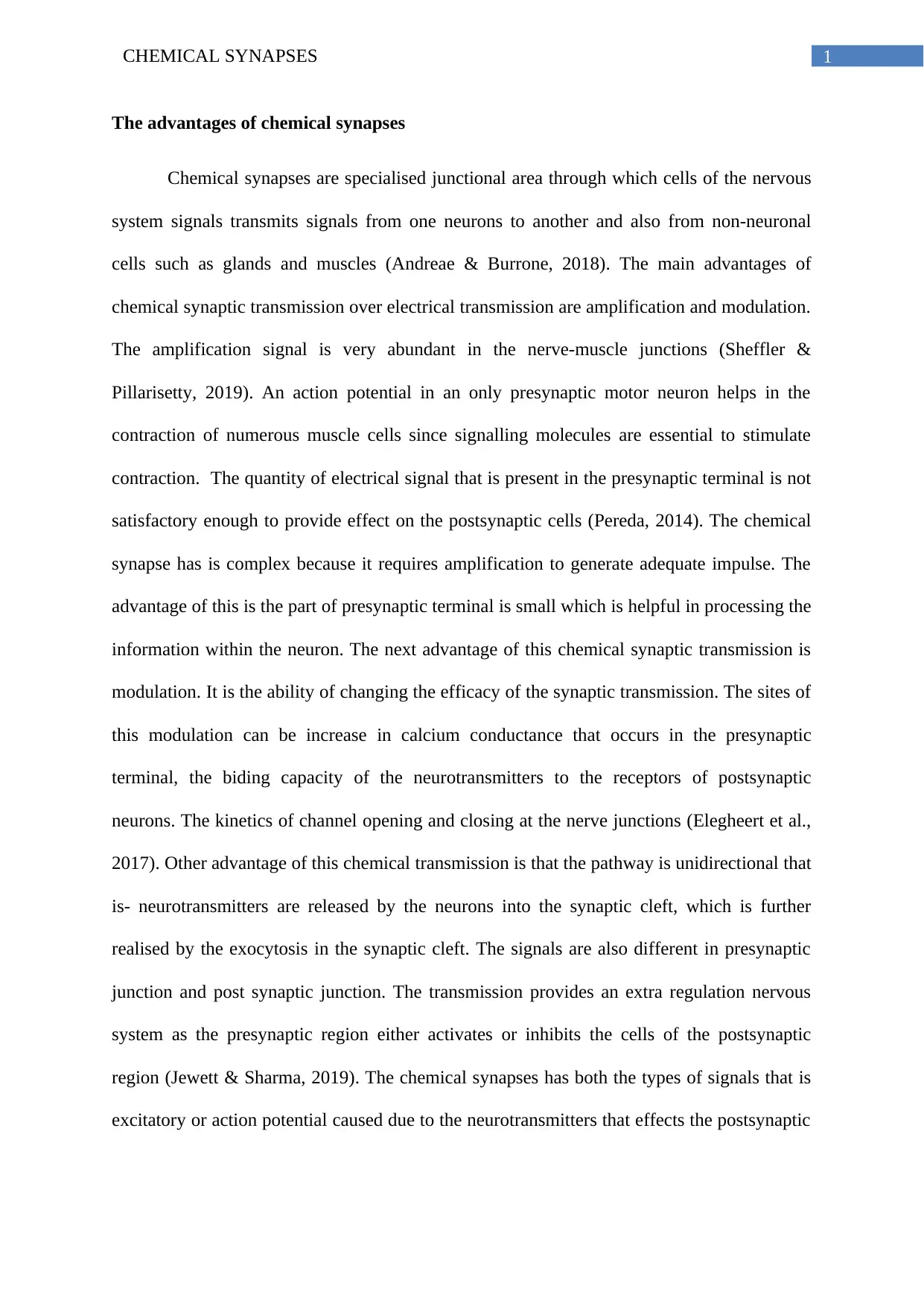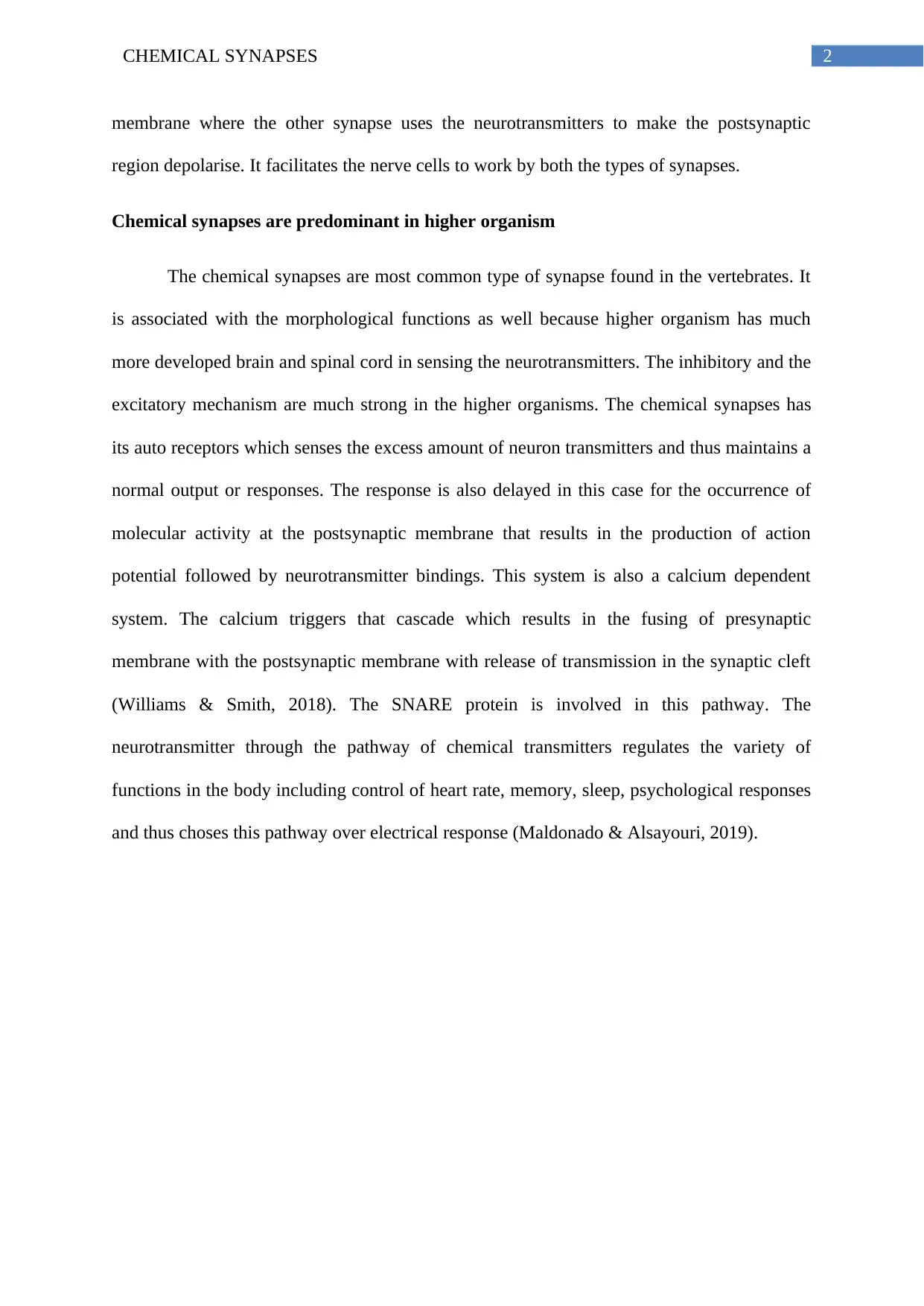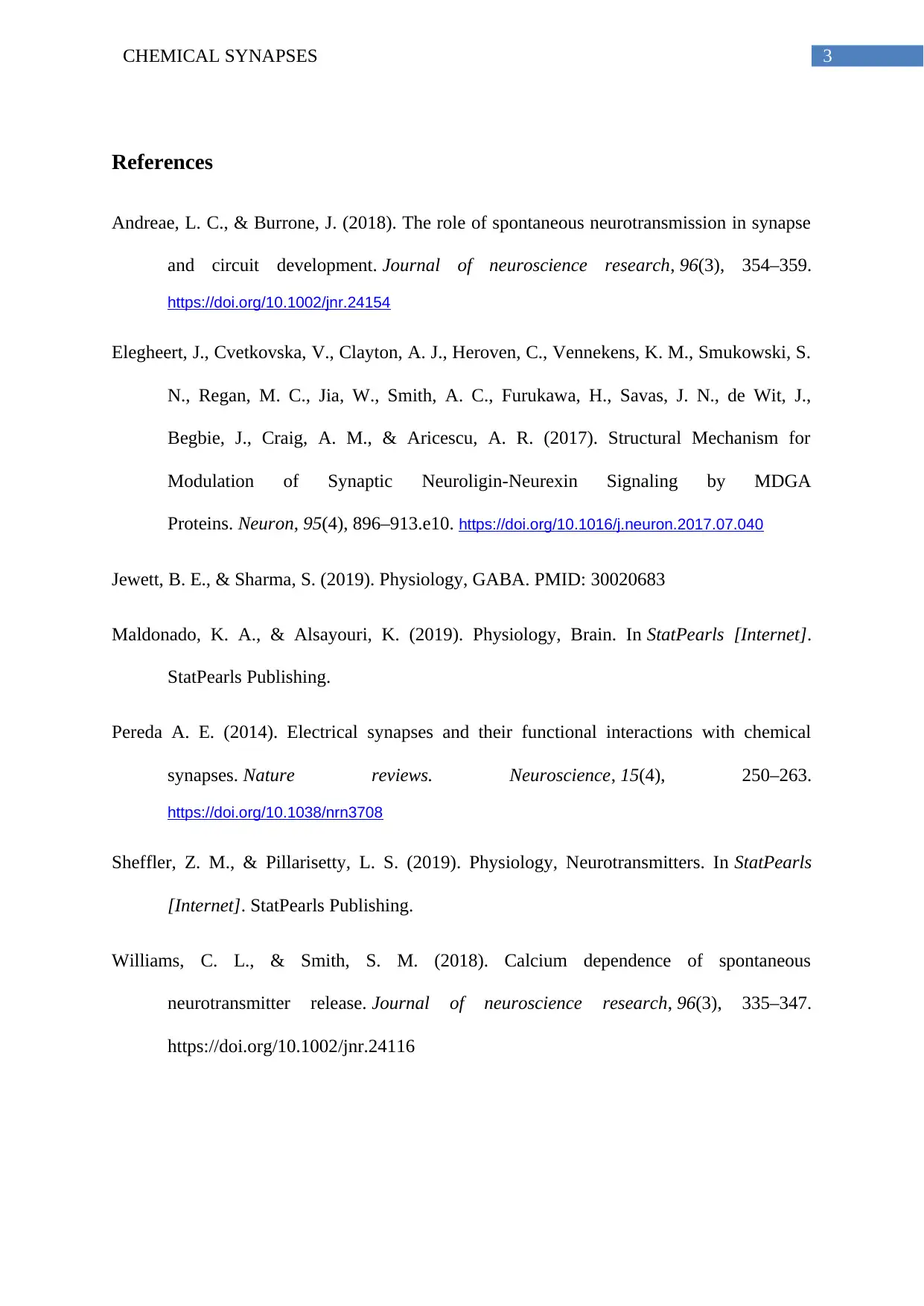Psychobiology: Advantages of Chemical Synapses in Nervous System
VerifiedAdded on 2022/08/31
|5
|889
|80
Discussion Board Post
AI Summary
This discussion post explores the advantages of chemical synapses, which are specialized junctions for signal transmission in the nervous system. The primary advantages highlighted are signal amplification and modulation. Chemical synapses, unlike electrical synapses, allow for amplification, as a single presynaptic neuron can influence multiple muscle cells. They also enable modulation, allowing for changes in synaptic transmission efficacy through mechanisms such as calcium conductance and neurotransmitter binding. The post further discusses the unidirectional nature of chemical synapses and their role in both excitatory and inhibitory signals, facilitating complex nervous system regulation. Chemical synapses are predominant in higher organisms due to their complex functions, including the presence of auto receptors and the involvement of the SNARE protein in neurotransmitter release. These features enable the regulation of diverse bodily functions, making chemical synapses crucial for advanced neural communication.
1 out of 5












![[object Object]](/_next/static/media/star-bottom.7253800d.svg)